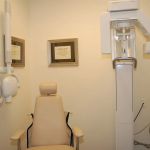
Prevention and Treatment of Tooth Enamel Erosion: Essential Tips for Stronger Teeth
- What is Tooth Enamel Erosion?
- Common Causes of Tooth Enamel Erosion
- How to Prevent Tooth Enamel Erosion
- Treatment Options for Tooth Enamel Erosion
- Real-Life Cases: Overcoming Enamel Erosion
What is Tooth Enamel Erosion?
Tooth enamel erosion is the gradual wearing away of the hard, protective outer layer of your teeth. Enamel is the body's hardest substance, but it can be damaged over time by various factors. Once enamel is worn down, it cannot regenerate naturally, leading to potential tooth sensitivity, discoloration, and an increased risk of cavities. If left untreated, enamel erosion can result in significant dental damage, affecting both aesthetics and functionality.
Common Causes of Tooth Enamel Erosion
Understanding the causes of tooth enamel erosion is the first step toward prevention and treatment. Several factors contribute to enamel loss:
- Acidic Foods and Beverages: Citrus fruits, soft drinks, and acidic foods like tomatoes and vinegar can erode enamel over time. The high acidity in these items weakens the enamel, leading to gradual wear.
- Brushing Too Hard: While brushing is essential for dental health, brushing with excessive force or using a hard-bristled toothbrush can wear down enamel.
- Teeth Grinding (Bruxism): People who grind their teeth at night or during stressful situations place undue pressure on their enamel, causing it to break down faster.
- Acid Reflux and Gastroesophageal Reflux Disease (GERD): Stomach acids that flow back into the mouth can damage tooth enamel, especially when reflux occurs frequently.
- Genetics: Some individuals may have weaker enamel due to genetic factors, making them more susceptible to erosion.
How to Prevent Tooth Enamel Erosion
Preventing tooth enamel erosion is crucial for maintaining long-term dental health. Here are some proactive steps you can take to protect your enamel:
- Limit Acidic Food Intake: Reduce consumption of acidic foods and drinks. When you do consume them, try to drink water afterward to neutralize the acids in your mouth.
- Use a Soft-Bristled Toothbrush: A soft-bristled toothbrush is gentle on enamel. Avoid brushing too hard, and use light, circular motions to clean your teeth.
- Rinse with Water After Eating: If you’ve had acidic food or drink, rinse your mouth with water to wash away harmful acids and protect your enamel.
- Chew Sugar-Free Gum: Chewing gum stimulates saliva production, which helps neutralize acids and protect enamel from erosion.
- Use Enamel-Strengthening Toothpaste: Toothpaste containing fluoride can help strengthen enamel and reduce the risk of erosion. Look for brands specifically formulated for enamel protection.
- Address Acid Reflux: If you suffer from acid reflux or GERD, managing the condition with medical advice can help prevent stomach acids from damaging your enamel.
Treatment Options for Tooth Enamel Erosion
If enamel erosion has already begun, it’s important to seek treatment to minimize further damage and restore your smile. There are various treatments available:
- Fluoride Treatments: Fluoride is known to help remineralize weakened enamel. Your dentist can apply professional fluoride treatments to strengthen your teeth and prevent further erosion.
- Dental Bonding: For minor enamel loss, dental bonding can be used to restore the appearance of your teeth. This treatment involves applying a tooth-colored resin to damaged areas.
- Veneers: If enamel erosion is severe, dental veneers may be an option. These thin, custom-made shells are placed over the front of your teeth to restore both function and appearance.
- Crowns: In cases where enamel erosion has caused significant damage, crowns may be recommended to protect and restore the tooth’s function.
- Saliva Substitutes: If dry mouth is contributing to enamel erosion, your dentist may recommend saliva substitutes to help maintain oral moisture and protect enamel.
Real-Life Cases: Overcoming Enamel Erosion
Let's take a look at a few real-life cases where individuals successfully managed and treated enamel erosion:
Mark, a 35-year-old man, had always enjoyed acidic sodas and fruit juices. Over time, he noticed his teeth becoming sensitive and yellowing. After a visit to the dentist, Mark was diagnosed with early enamel erosion. He began using fluoride toothpaste, reduced his intake of acidic drinks, and incorporated regular dental check-ups into his routine. Over six months, Mark saw significant improvements, with less sensitivity and stronger enamel.
Linda, a 50-year-old woman, had been grinding her teeth at night for years, unknowingly causing significant enamel erosion. After consulting with her dentist, Linda received a custom night guard to prevent further grinding. She also began using a soft-bristled toothbrush and switched to an enamel-strengthening toothpaste. Linda’s enamel erosion slowed, and she regained confidence in her smile.
Taking proactive steps to prevent tooth enamel erosion and seeking timely treatment can make all the difference in preserving your oral health. If you’re noticing signs of enamel erosion, don’t wait—take action now!
If you want to learn more about products designed to protect and restore enamel, click here to explore a range of enamel-strengthening solutions and treatments tailored to your needs.







 Virginia Family Dentistry Brandermill - Woodlake4.0 (724 review)
Virginia Family Dentistry Brandermill - Woodlake4.0 (724 review) Heritage Grove Family Dental - Plainfield Dental Clinic4.0 (1397 review)
Heritage Grove Family Dental - Plainfield Dental Clinic4.0 (1397 review) Buford Family Dental4.0 (1583 review)
Buford Family Dental4.0 (1583 review) Legacy Smiles Dentistry4.0 (151 review)
Legacy Smiles Dentistry4.0 (151 review) Small World Dental - Pediatric Dentist and Orthodontist4.0 (1469 review)
Small World Dental - Pediatric Dentist and Orthodontist4.0 (1469 review) Perfect Dental – Taunton4.0 (782 review)
Perfect Dental – Taunton4.0 (782 review) The Importance of Oral Health Education During Pregnancy for a Healthy Pregnancy
The Importance of Oral Health Education During Pregnancy for a Healthy Pregnancy Best Tips for Brushing Your Teeth Properly for Healthy Gums: Essential Techniques for Oral Health
Best Tips for Brushing Your Teeth Properly for Healthy Gums: Essential Techniques for Oral Health Why Skipping Dental Checkups Can Lead to Bigger Oral Health Problems
Why Skipping Dental Checkups Can Lead to Bigger Oral Health Problems Advantages of Porcelain Dental Restorations
Advantages of Porcelain Dental Restorations How Can Diabetes Cause Tooth and Gum Problems? Preventing and Managing Oral Health Issues
How Can Diabetes Cause Tooth and Gum Problems? Preventing and Managing Oral Health Issues Healthy Habits for Promoting Good Oral Health and Hygiene: Tips for a Healthy Smile
Healthy Habits for Promoting Good Oral Health and Hygiene: Tips for a Healthy Smile